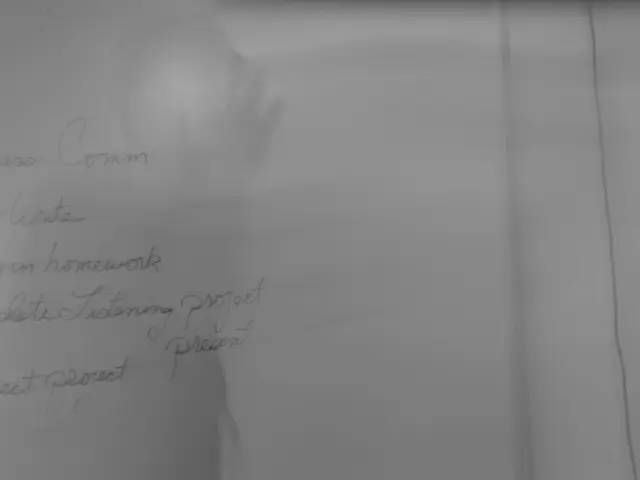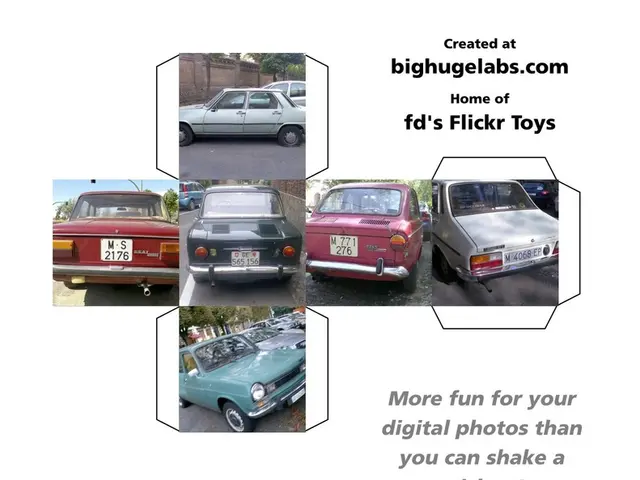Toyota's Q1 Financial Shift: Reason Behind Profit Dip Yet Hybrid Growth, and Rapid Advancement Towards Net Zero Emissions Goals
In a recent financial update, Toyota Motor Corporation has announced a downward revision of its full-year operating profit forecast to ¥2.66 trillion ($18 billion), marking a 37% drop in net profit for the quarter ending June 30, 2025. However, the automotive giant has also unveiled an ambitious strategy to achieve carbon neutrality by 2050.
The strategy, dubbed the Environmental Challenge 2050, involves a comprehensive, multi-technology approach across Toyota's entire vehicle lineup and value chain. The goal is to minimize CO2 emissions in all lifecycle stages, including manufacturing, transportation, operation, fueling/charging, and recycling.
Emission Reduction Targets and Investments
Toyota Tsusho Group, part of Toyota's ecosystem, has adopted Science-Based Targets initiative (SBTi)-certified greenhouse gas (GHG) reduction targets. For Scope 1 & 2 emissions (direct and indirect emissions from owned or controlled sources), Toyota aims for a 50% reduction by 2030 and a 95% reduction by 2050 compared to 2019 levels. For Scope 3 emissions (indirect emissions from the value chain such as supply chain and product use), the targets are a 27.5% reduction by 2030 and 90% or more reduction by 2050 compared to 2019 levels.
To reach these goals, Toyota is investing in expanding its electrified vehicle portfolio, transitioning manufacturing processes and supply chains to renewable energy use, and undertaking green manufacturing initiatives. The company plans to offer over 70 electrified models globally by 2025, led by vehicles such as the bZ4X.
Renewable Energy and Decarbonized Materials
Toyota is also focusing on sourcing 100% green electricity via power purchase agreements, renewable energy certificates, and captive solar installations. The company is also adopting low-carbon materials like hydrogen-based steel and increasing recycled content.
Green Manufacturing Initiatives
Toyota is committed to decarbonized vehicle production and sustainable supply chains, consistent with the broader automotive industry trend to fully decarbonize all emissions scopes by 2050. The company's largest new sustainability investment is a ¥140 billion ($922 million) advanced paint facility in Georgetown, Kentucky, which will reduce paint shop carbon emissions by 30% and cut water use by 1.5 million gallons annually.
Aggressive Sales Targets for Electric Vehicles
Toyota aims to sell 1.5 million battery electric vehicles (BEVs) annually by 2026 and 3.5 million by 2030. The company's BEV sales have been steadily increasing in markets with expanding charging infrastructure.
Other Notable Achievements and Initiatives
- In 2024, Toyota diverted 94% of waste from landfills globally and recycled over 99% of scrap metal from manufacturing.
- Toyota plans to use 100% renewable electricity for its manufacturing in Europe by 2030.
- The primary reason for Toyota's profit drop was new U.S. tariffs of 15% on Japanese car imports, which reduced profit by an estimated ¥450 billion.
- Toyota's share price fell about 1.6% following the earnings announcement.
The Environmental Challenge 2050 Framework
Toyota's Environmental Challenge 2050 framework includes six core challenges: minimizing water usage and improving water discharge quality, protecting biodiversity around manufacturing sites and supply chains, advancing a circular economy by extending product lifecycles and reducing waste, and more. The initiative also includes a goal of zero CO2 emissions from new vehicles through hybrid, BEV, and hydrogen fuel cell adoption.
In summary, Toyota's 2050 carbon neutrality strategy encompasses aggressive emission reduction targets across Scopes 1, 2, and 3, significant investments in renewable energy and decarbonized materials, and a broad electrification plan that includes diverse vehicle technologies and green manufacturing projects. The company is also committed to reducing waste, improving water usage, protecting biodiversity, and advancing a circular economy as part of its broader sustainability efforts.
- Toyota Motor Corporation is investing in expanding its electrified vehicle portfolio and transitioning manufacturing processes to renewable energy use as part of its strategy to achieve carbon neutrality by 2050.
- As part of Toyota's Environmental Challenge 2050, the company's goal is to minimize CO2 emissions in all lifecycle stages of its vehicle lineup and value chain, which includes reducing emissions from transportation, operation, fueling/charging, and recycling.
- To meet its emission reduction targets, Toyota Tsusho Group has adopted Science-Based Targets initiative (SBTi)-certified greenhouse gas (GHG) reduction targets, aiming for a 90% or more reduction in Scope 3 emissions by 2050 compared to 2019 levels.
- Toyota is committing significant financial resources to green manufacturing initiatives, including a ¥140 billion ($922 million) investment in an advanced paint facility in Georgetown, Kentucky, to reduce paint shop carbon emissions and cut water use by 1.5 million gallons annually.




